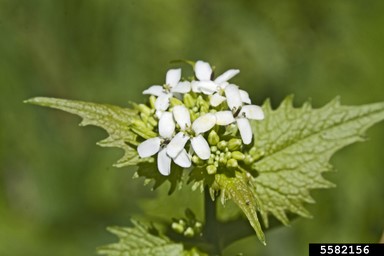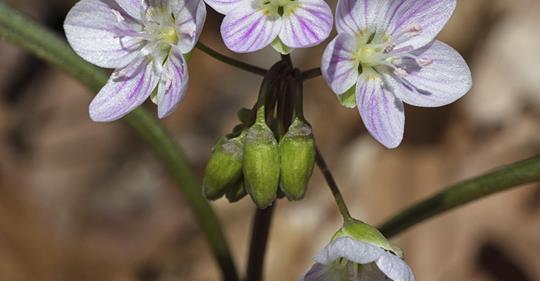
By: Reba Kocher
Have you heard about our upcoming program, the Great Garlic Mustard Pull? It is an awesome opportunity for you to help us take back our Gardens! On May 18th, 2019 from 9:30A.M.-11:30A.M., we are heading to the woodlands to pull out this invasive weed. You will get to take home as much garlic mustard you can eat. Don’t worry--we will throw in some recipes too! We need your help to clear out the pesky garlic mustard, so we can promote the growth of other diverse plant species.
So why do we need to host an event like the Great Garlic Mustard Pull? Well, Garlic Mustard (Alliaria petiolata) is a non-native, invasive species. The earliest report of the plant comes from Long Island, NY in 1868. The plant comes from Europe, and it was introduced to North America for medicinal and food reasons. Within the last 150 years, Garlic Mustard has become “one of the worst invaders of forests in the American Northeast and Midwest” according to the New York Invasive Species Information website. Even though it takes two years for it to fully mature, once it matures, it can produce anywhere between 600-7,900 seeds (Nuzzo, 1993)! That’s A LOT of Garlic Mustard! It doesn’t even need to rely on pollinators because it can self-pollinate. To make matters worse, if the Garlic Mustard is cut or stepped on, the plant doesn’t die. Instead, unless the root is completely removed, the root crown will continue to grow stems.
Not only is it prolific, but Garlic Mustard also forms dense stands that choke out native plants by controlling the amount of light, water, and nutrients the native plant receives. Michigan State University did an extensive study of Garlic Mustard in 2008, and researchers found that a Garlic Mustard invasion greatly impacts the beneficial relationships that native plants have with fungi and other wildlife in the forest. They found that a Garlic Mustard invasion can decrease the diversification of annuals and tree seedlings. Garlic Mustard is allelopathic, meaning that it produces a chemical that inhibits the growth of other, native plants and mychorrizal fungi. The loss of plant diversification impacts butterflies, as an example, because butterflies rely on diverse plants for egg-laying. Michigan State University also found that the change in tree composition could have long-term effects on forests because the Garlic Mustard creates a selective barrier that some tree seedlings, such as the Chestnut Oak (quercus prinus) will not be able to survive. Remember the mychorrizal fungi mentioned earlier? This fungi has a beneficial relationship with trees and seedlings. It encourages healthy tree growth and is necessary for seedling survival.
Garlic Mustard has very few natural enemies, especially in the United States. The plant is bitter, which is off-putting to most animal and insect species. This is likely to the leaves containing cyanide. I know what you’re thinking--”But you said earlier you’re giving us as much as we can eat!” Yes, Garlic Mustard contains cyanide in its leaves, but a lot of vegetables we eat contain cyanide. Broccoli (a relative to Garlic Mustard!), cabbages, and other cruciferous vegetables also contain cyanide! You’d have to eat a Garlic Mustard salad every single day to be poisoned by it (http://www.washingtonpost.com/wp-srv/special/metro/urban-jungle/pages/130416.html). Not only this, but cooking the leaves the cyanide levels are reduced greatly (sometimes even completely eliminated). Humans are the biggest threat that this awful plant has! So, bring your family and friends to the Great Garlic Mustard Pull. Spend the morning with nature, and save our woodlands! We promise it will be a great time!
References & Further Reading
https://www.canr.msu.edu/news/garlic_mustard_threat_to_woodlands
https://www.nytimes.com/2017/05/11/nyregion/garlic-mustard-evil-invasive-delicious.html
http://nyis.info/invasive_species/garlic-mustard/










